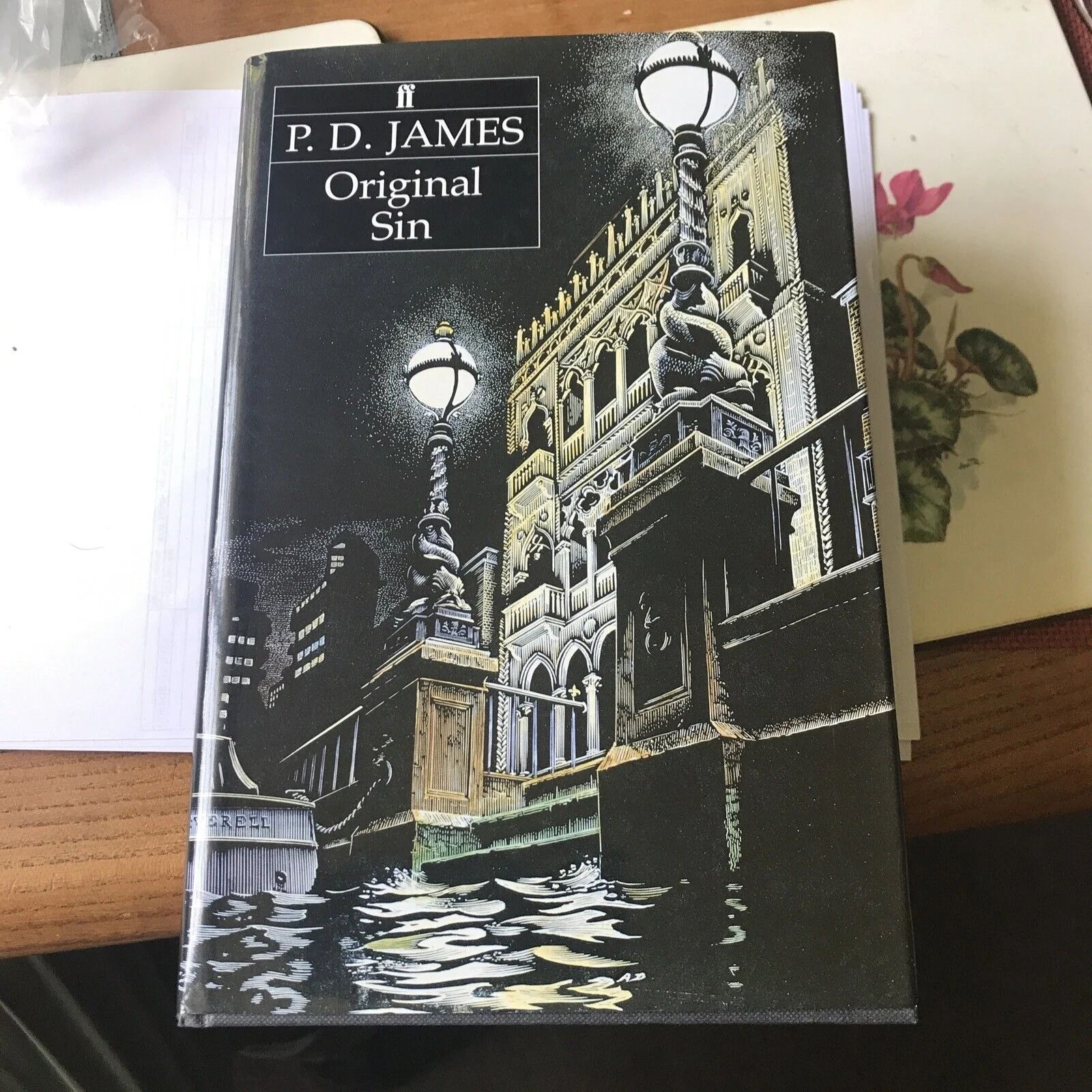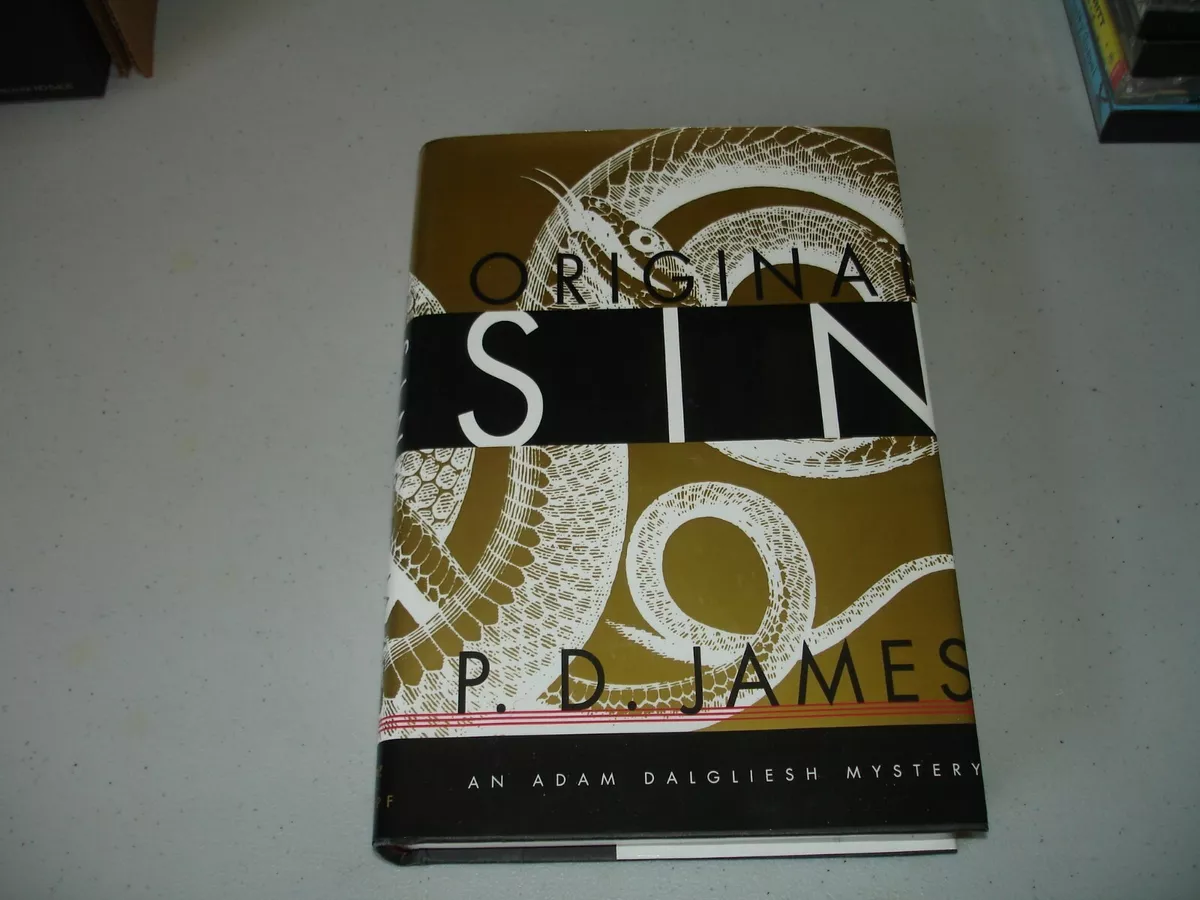When I first picked up “Original Sin” by P.D. James, it was on a rainy afternoon in London, the kind of day that practically begs for a good mystery novel. As a long-time admirer of P.D. James’s work, I was eager to dive into another Adam Dalgliesh investigation. The allure of a 200-year-old publishing house set in a mock-Venetian palace on the Thames was simply irresistible. Little did I know, this book would take me on a journey through the dark corridors of human nature, guilt, and retribution.
The story begins with the murder of Gerard Etienne, the ambitious new managing director of Peverell Press. His body is found in a gruesome state, setting the stage for a complex and chilling investigation. Commander Adam Dalgliesh and his team are called in to unravel the mystery, and as they dig deeper, they uncover a tangled web of motives among the staff and associates of the publishing house. The plot thickens with each page, revealing deep-seated resentments, hidden secrets, and a murderer who is far from finished.
From the very beginning, I was captivated by the rich, atmospheric setting. P.D. James’s descriptions of the Thames riverside and the mock-Venetian palace are so vivid that I could almost feel the damp air and hear the lapping of the water against the stone walls. The setting is not just a backdrop but a character in its own right, adding layers of intrigue and mystery to the story.
One of the standout features of “Original Sin” is its complex character development. James delves deep into the psychological makeup of her characters, exploring their motivations and relationships with a keen eye. Each character is meticulously crafted, from the enigmatic Adam Dalgliesh to the ambitious Gerard Etienne and the various staff members of Peverell Press. As the story unfolds, we get to see the darker sides of these characters, their hidden fears, and their long-held grudges.
However, the book’s pacing can be a double-edged sword. James takes her time to build the atmosphere and develop her characters, which can make the story feel slow at times. For readers who prefer fast-paced thrillers, this might be a drawback. But for me, the deliberate pacing allowed for a more immersive experience, giving me time to savor the details and get lost in the world James created.
One of the most memorable aspects of “Original Sin” is its exploration of themes like inherited guilt and retribution. The concept of “original sin” and its consequences across generations is woven throughout the narrative, adding depth and complexity to the story. It made me reflect on how the past can shape the present and how the sins of one generation can impact the next.
There are several passages in the book that left a lasting impression on me. One such passage is when Dalgliesh reflects on the nature of evil and the human capacity for cruelty. James’s prose is elegant and thought-provoking, and this particular passage made me pause and think about the darker aspects of human nature. Another memorable moment is the revelation of the murderer’s identity and the motive behind the killings. It was a chilling and satisfying conclusion to the intricate plot.
James’s writing style is another highlight of the book. Her prose is elegant and descriptive, painting vivid pictures in the reader’s mind. Her insights into the publishing industry add an extra layer of interest, especially for book lovers like myself. The way she weaves literary allusions into the narrative is a testament to her skill as a writer and her deep love for literature.
Reading “Original Sin” also made me reflect on the nature of guilt and the weight of the past. It made me think about how our actions, both good and bad, can have far-reaching consequences. The book’s exploration of these themes left me with a sense of introspection and a deeper understanding of human nature.
In conclusion, “Original Sin” is a sophisticated, multi-layered mystery that rewards careful reading. P.D. James’s ability to blend a compelling mystery with deeper themes of guilt, revenge, and the weight of the past demonstrates her mastery of the genre. While the pacing may be slower than some contemporary thrillers, the rich character development and atmospheric setting make it a worthwhile read.
I would highly recommend “Original Sin” to fans of classic detective fiction, readers who appreciate character-driven mysteries, and anyone interested in the publishing world and literary settings. It’s a book that not only entertains but also makes you think, and that’s a rare and valuable quality in any novel. So, if you’re looking for a mystery that goes beyond the surface and delves into the complexities of human nature, “Original Sin” is definitely worth your time.